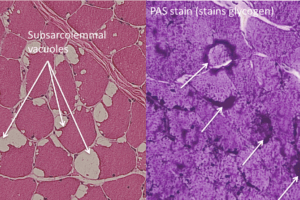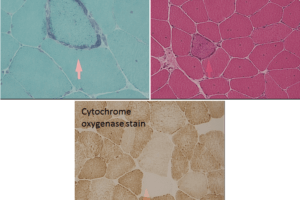The Nernst equation describes the voltage across a cell membrane at which there would be no net flow of a particular ion (assuming there are ion channels that passed that ion). This voltage is called any of the following names “reversal potential,” “Nernst potential,” or “equilibrium potential” of an ion.
Form of Equation
The Nernst potential (Eion) is the voltage needed to counterbalance the diffusion of a charged ion down its concentration gradient. The potential is therefore a function of the concentration difference ([ion outside] vs. [ion inside]) across the membrane as well as the charge on the ion (z):
Eion = RT/zF (ln([ion outside]/[ion inside]))
R is the gas constant (8.314472 J K-1 mol-1) T is temperature in Kelvin (body temperature is 273 + 37 = 310K) z is the charge on the ion (eg., +1 for Na+, +2 for Ca2+, -1 for Cl-) F is Faraday’s constant (9.65×10^4 C mol^-1) [ion outside] = concentration of the ion in the extracellular space [ion inside] = intracellular concentration of the ion
Simplifying Assumptions for Calculating the Nernst Potential
For simplicity’s sake, students often assume “standard conditions” (temperature of 27 deg C) and write the equation with log base 10, rather than a natural log (ln). This makes RT/F close to 60mV, and the equation can be written:
Eion = (60/z) ( log([ion out]) – log([ion in]) )
Typical Equilibrium Potentials for Common Ions
The dominant ions in neurons are Na+, K+, Cl-, Ca2+. It is important to know the equilibrium potentials for each of these ions, and the concentrations inside and outside of the cell.
| Ion | [intracellular] (mM) | [extracellular] (mM) | Equilibrium potential (mV) |
| Na+ | 12 | 145 | +64 mV |
| K+ | 140 | 5 | -86 mV |
| Ca2+ | 0.0001 mM | 2 mM | Equilibrium potential not defined |
Reference Materials
Prof. Francesco Bezanilla of the University of Chicago has an excellent primer on neurophysiology, which includes an animated demonstration of the factors that determine the Nernst potential.
Medical computing has calculators and explanations for several neurophysiological concepts like the Action potential and Nernst potential.



